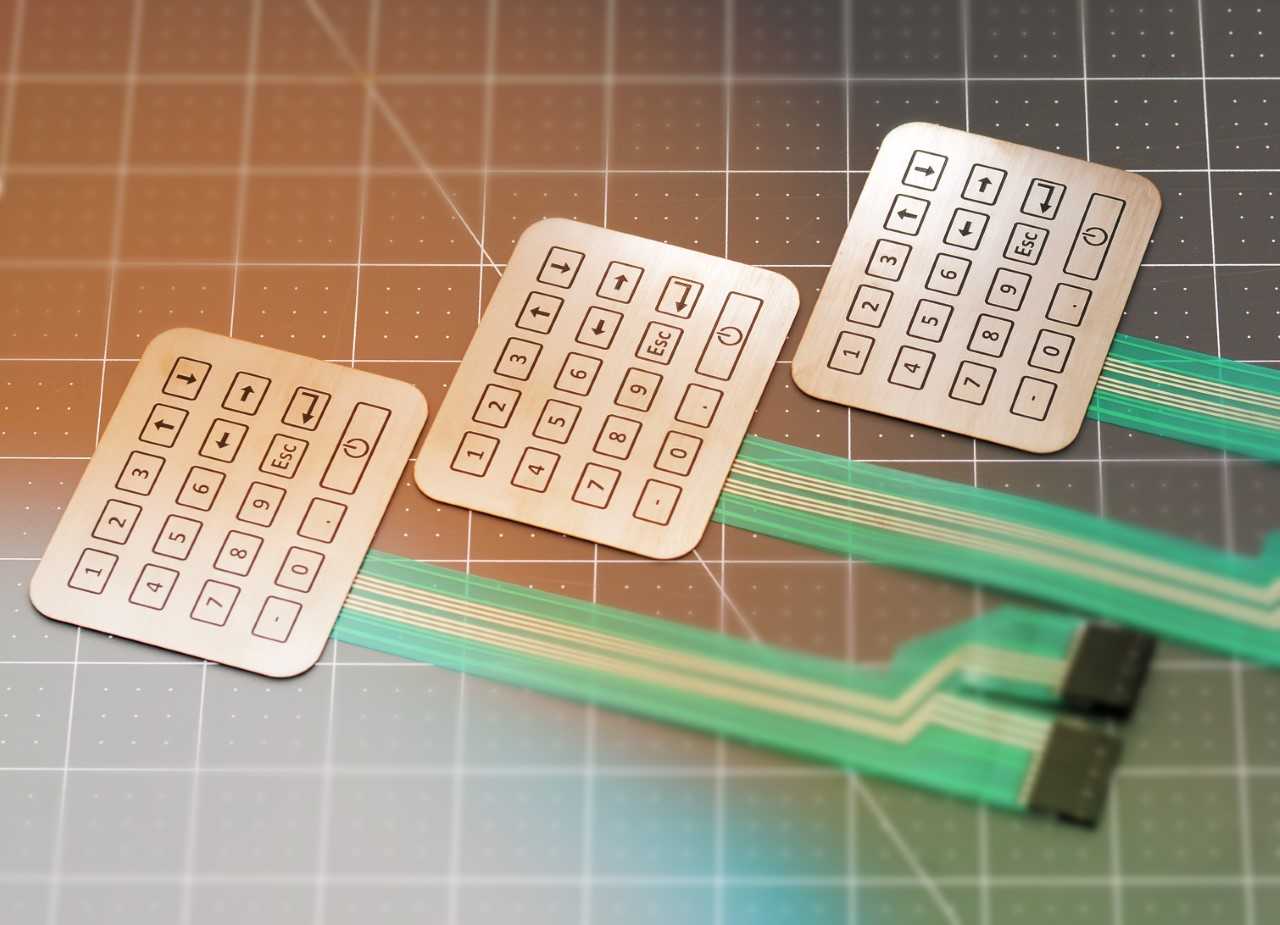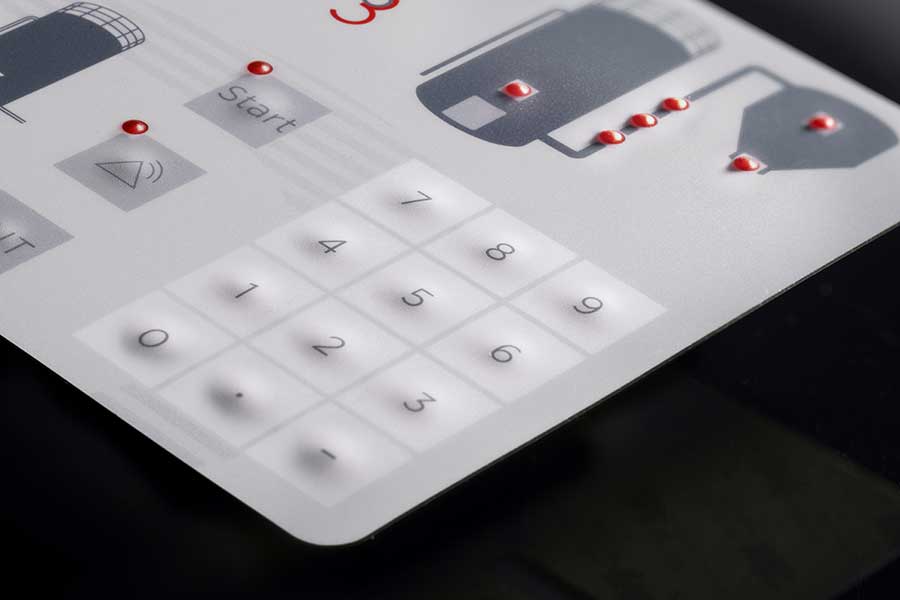You’ll see the difference when collaborating with a premium membrane switch manufacturer.
You’ll see the difference when collaborating with a premium membrane switch manufacturer.
Blog Article
Everything About Membrane Change: Understanding Its Layout and Functionality
When you think about the control interfaces in modern-day devices, membrane buttons typically come to mind. Allow's discover what sets membrane layer switches apart from various other control systems.
What Are Membrane Layer Switches?

Membrane buttons can additionally be customized concerning form, dimension, and graphics, enabling suppliers to produce unique interfaces customized to particular products. Generally, membrane layer switches play a considerable function in improving customer experience throughout a vast range of applications.
How Membrane Switches Over Job
When you push a key on a membrane switch, it turns on an uncomplicated yet reliable device. The leading layer, usually made of flexible material, pushes down onto a conductive layer below it. This activity bridges the space between conductive traces, completing an electrical circuit. As soon as the circuit closes, it sends a signal to the gadget's controller, which analyzes your input.
You'll discover that the responsive feedback varies based on the button layout, offering either a soft click or an extra pronounced response. When you launch the key, the membrane go back to its initial placement, resuming the circuit and quiting the signal. This procedure happens nearly instantly, guaranteeing a receptive customer experience.
Membrane buttons are popular as a result of their durability and resistance to dirt and dampness, making them optimal for various applications, from house appliances to clinical devices. Recognizing this operation assists you value their extensive use.
Key Elements of Membrane Buttons
Recognizing the essential parts of membrane switches is fundamental for comprehending their functionality and layout. The safety layer shields against ecological variables and wear, extending the button's life expectancy. By comprehending these elements, you'll gain insight right into how membrane switches run and their relevance in numerous applications.
Products Made Use Of in Membrane Layer Switch Design
The performance and sturdiness of membrane switches over greatly rely on the products made use of in their design. You normally experience polyester and polycarbonate as main substratums due to their outstanding stamina and versatility. These materials withstand scratches and chemicals, making them optimal for requiring settings.
The conductive layers typically utilize silver or carbon, picked for their dependability and conductivity. membrane switch manufacturer. Silver offers remarkable performance, while carbon is an economical choice. For the overlay, you may take into consideration a matte or glossy finish, depending upon your aesthetic requirements and user experience
Adhesives play an important role also; they bond layers safely and assure longevity. Ensure to select adhesives that withstand ecological aspects like temperature level and moisture. Don't forget the importance of a good printing strategy for graphics, as it boosts additional resources both functionality and visual charm. Selecting the appropriate materials will certainly guarantee your membrane button stands the test of time.
Style Factors To Consider for Membrane Switches
While making membrane layer switches, it's crucial to consider various elements that affect their functionality and user experience. Start by focusing on the design and button size; make certain they're user-friendly and simple to browse. Think about the tactile responses you desire to give-- will individuals need a noticeable click or a softer touch? Furthermore, think regarding the materials you'll utilize, as they'll affect longevity and appearances.
Validate your design suits ecological aspects, like wetness or temperature variations, which might influence performance. By very carefully considering these elements, you'll produce a membrane switch that boosts use and fulfillment.
Applications of Membrane Layer Buttons
Membrane layer switches are versatile elements discovered in numerous applications, from industrial tools to consumer electronics. You'll see their impact in devices that call for sturdy user interfaces and in devices that gain from smooth styles. Recognizing these applications helps you value the performance and functionality of membrane buttons in day-to-day technology.
Industrial Equipment Use
When you're looking to improve the performance of industrial devices, membrane layer switches supply a reputable solution that integrates durability with user-friendly style. These switches are ideal for rough settings, supplying resistance to dust, dampness, and chemicals. Welcome membrane layer switches to read the full info here improve your operations and boost overall performance.
Consumer Electronic Devices Assimilation
In the domain name of customer electronic devices, membrane layer switches play a crucial duty in enhancing individual communication and device functionality. Membrane layer switches also assure sturdiness and resistance to dirt and moisture, expanding the lifespan of your electronic devices. By picking membrane layer switches, you enhance not just the performance however additionally the design of your gadgets, making daily communications smooth and delightful.
Advantages and Negative Aspects of Membrane Buttons
While membrane buttons use a range of benefits, they additionally come with some downsides that you need to take into consideration. One considerable benefit is their compact layout, making them perfect for space-constrained applications. They're likewise affordable, offering a long lasting solution with a low manufacturing price. On top of that, their seamless surface area is easy to clean, improving hygiene in environments like health centers.

Nonetheless, there are drawbacks. Membrane layer switches can have a much shorter life-span compared to mechanical buttons, particularly under heavy usage. They can likewise be less responsive, which might influence user feedback throughout operation. In addition, if damaged, fixing them can be tough and typically calls for total substitute. Inevitably, their sensitivity to severe temperatures and ecological conditions might limit their effectiveness in certain settings. Balancing these benefits and drawbacks will aid you determine if membrane switches are the ideal suitable for your task.
Often Asked Inquiries
The Length Of Time Do Membrane Layer Switches Over Commonly Last?
Membrane changes typically last between 5 to one decade, depending upon usage and ecological conditions. You'll wish to assess factors like wear, exposure to wetness, and temperature level variations to assess their longevity successfully.
Can Membrane Switches Be Custom-made for Certain Layouts?
Yes, you can personalize membrane buttons to fit certain layouts (membrane switch manufacturer). You'll have the flexibility to try this pick shades, forms, and formats that match your task's requirements, guaranteeing they blend flawlessly with your general visual
What Is the Price Array for Membrane Change Manufacturing?
The price range for membrane layer switch production generally falls between $1 and $10 each, depending upon aspects like style complexity, quantity, and materials. You can obtain quotes from producers to locate the most effective option.

Are Membrane Switches Water-proof or Resistant?
Membrane buttons can be created to be waterproof or resistant, depending on materials used and building and construction approaches. If you need them for wet settings, assure you specify those requirements throughout the design procedure.
Exactly How Do Membrane Switches Over Contrast to Conventional Switches?
Membrane layer buttons are generally thinner and more versatile than conventional switches, offering a sleek layout. They're usually less complicated to clean and integrate, but may not give the tactile comments you're used to with mechanical choices.
Verdict

Report this page